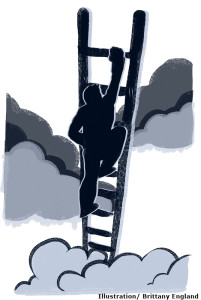May Marks Asian American and Pacific Islander Achievements
 The month of May marks the annual celebration of Asian American and Pacific Islander Heritage, which is a time to honor the success of Asians from the their first migration to the United States to the next generation of Asian Americans.
The month of May marks the annual celebration of Asian American and Pacific Islander Heritage, which is a time to honor the success of Asians from the their first migration to the United States to the next generation of Asian Americans.
According to C.N. Le, Director of Asian and Asian American Studies Certificate Program at University of Massachusetts, Amherst, in May 1992, President George H. W. Bush extended what was initially proclaimed as a 10-day celebration to a month long observation.
Le said the first wave of Asian immigrants to the states occurred in 1840. That is when the British and Spanish brought slaves from Asian nations to make up for a shortage of African slaves. Immigration continued on a larger scale eight years later, when gold was discovered in the U.S.
Asian history of immigration has contributed to the current status of enduring contributions made by Asians to the building of the United States said Maria Ochoa, political science professor at San Jose State.
Asian Americans trace their roots to any of dozens of countries in the Far East, Southeast Asia and the Indian subcontinent defines the Pew Research center.
“Asian immigration spans over 150 years,” said Grace Yoo, an Asian American studies professor from San Francisco State.
According to the Census Bureau, the percentage growth of the Asian population alone, or in combination, between the 2000 and 2010 censuses, was 46 percent, which was more than any other major race group.
May Shay, the executive deputy director of the Hayward Asian Cultural Center, said 27 percent of the 50,000 people located in Hayward, and are Asian.
Although it is unclear which specific Asian group arrived first to the Americas said Ochoa, there are a number of theories about how and when Asian migration began.
According to the Pew Research center, Asian Americans are now the country’s best-educated, highest-earning and fastest-growing racial group.
Sixty-one percent of adults ages 25 to 64, who have come from Asia in recent years, have at least a bachelor’s degree stated the research center. Asian Americans have a pervasive belief in the rewards of hard work.
“Nearly 69 percent of Asians say they can get ahead if they are willing to work hard, a view shared by a somewhat smaller share of the American public as a whole 58 percent,” the Pew Research Center stated.
In 2011, Rajesh Shrotriya M.D., an immigrant from India, was listed as Spectrum Pharmaceuticals highest paid CEO among 100 other CEO’s on AFL-CIO, an online corporate watch website.
Successful business entrepreneurs include Mukesh Ambani, a billionaire industrialist that joined Bank of America’s board as an independent director in 2011, stated “The Economic Times.” Ambani heads India’s leading business corporation Reliance Industries group.
Achievement has also touched a local liquor storeowner, Sontok Singh. He has been living in the U.S. for the past 12 years and acquired Bayhill Food and Liquors, located at 2637 East Ave. in Hayward.
Singh discussed his family background and how he has come a long way from Punjab, a state on the outskirts of northern India, to becoming a businessman in America.
“It basically takes a lot of patience and all of your savings, but to say that I own a business, that too in America, is a job well done,” said Singh.
Asian Americans are climbing up the business ladder not only in mathematical and scientific industries, but also creative forms of business such as fashion.
Michelle Obama wore a Jason Wu, famous Taiwanese-Canadian fashion designer, dress for the second time around to the 2013 Presidential Inaugural Ball. She also showed up in Wu to the State of the Union.














